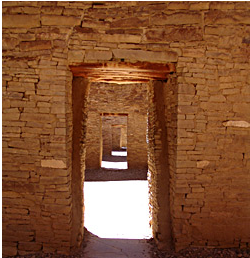Publication Date
12-1-2013
Abstract
This dissertation examines type 2 diabetes management and prevention at Ysleta del Sur Pueblo, a federally recognized American Indian tribe in El Paso, Texas. Type 2 diabetes is a serious and growing concern at the Pueblo, and while the incidence is not as high as it is in other tribes in the United States, it is still much higher than the national average. Despite excellent biomedical research that shows how individuals can prevent diabetes, and countless translated diabetes prevention programs targeted to individuals and families to prevent the disease, the incidence of diabetes continues to rise. This dissertation argues that there are currently two dominant models, and one emerging model, of diabetes research and intervention among American Indian peoples. Located on a spectrum, they are (1) individual-oriented biomedical models developed predominately for white, Western populations, which are applied to both the general U.S. population and American Indian peoples; (2) modifications, adaptations, or translations of these programs for application in non-white communities, including American Indian communities; and (3) emerging models of communal prevention in which intervention activities derive from local cultural practices and are then enhanced with biomedical practices. I argue that diabetes research will benefit by shifting to the third model of care and prevention. Utilizing a collaborative methodology founded on community-based participatory research, I conducted 18 months of fieldwork and volunteer employment at a community health center and the reservation it serves. During research, I observed or participated in secular activities at the Community Health Center, religious activities as part of the annual religious cycle, and a variety of activities related to experimental community gardens. I enhanced my participant-observation with interviews of the Community Health Center staff (both native and non-native), of tribal council members and religious leaders, of enrolled diabetic and non-diabetic individuals, and of non-diabetic tribal descendants. This research covers four intersecting domains to shed light on the occurrence of diabetes and changing methods of prevention. The first domain, a political economic history of the Pueblo, shows how type 2 diabetes took hold in the community after changes in economies, diet, and exercise. Five epochs are explored: (1) the Pueblos dislocation to their current location following the Pueblo Revolt and the resulting impact on lifestyle; (2) how loss of tribal land changed food production practices and introduced new foods; (3) how federal recognition had both positive and negative impacts on the Pueblo's built environment, resulting in new dance practices and food consumption; (4) how a 'boom and bust' era of casino gaming negatively impacted wellness programs; and (5) how the Pueblo is reshaping diabetes prevention by supporting nation building programs and tribal identity. The second domain examines diabetes-related practices at the Community Health Center. I learned that the Community Health Center is engaged in management of diabetes at the individual level but has yet to establish activities that may prevent diabetes in the reservation. This inability to expand is the result of structural practices that make it very difficult for the Pueblo to develop new programs. Structural challenges include insufficient staff, lack of training in new and innovative health prevention models, and a system that promotes Western medical practices and minimizes the contribution of the local American Indian staff. In contrast to the Community Health Center, the third domain, the broader Pueblo community, reveals that Pueblo members do participate in many community-wide practices that may prove useful for diabetes prevention. Although the tribal community does not view these activities as wellness practices, if these activities were supported by the Health Center in a culturally sensitive manner they could potentially act as effective diabetes prevention practices. These activities emerge from religious institutions and include community gardens and tribally grown food to support nutritional education, religious dancing and pilgrimage activities which promote regular exercise, and enhancement of the Pueblo's built environment to make engagement in wellness activities easier. The final domain, that of individual choice and identity, sheds light on how individuals engage diabetes management or prevention at the community health center and within religious institutions. I link practices to generationally defined identity, show how biomedical and indigenous models of diabetes management and prevention intersect, and suggest that a having variety of tribally supported programs is necessary to prevent diabetes on a community-wide scale. The dissertation concludes with a discussion of changes that have occurred at the Pueblo since the research concluded, further recommendations, and implications for anthropological research among Pueblo Indians.'
Keywords
Ysleta del Sur Pueblo, type 2 diabetes, disease prevention, disease management, culturally appropriate care, medical anthropology
Project Sponsors
Robert Wood Johnson Foundation Center for Health Policy at the University of New Mexico, Centers for Disease Control and Prevention, Hispanic Serving Health Professions Schools, Smithsonian Institution
Document Type
Dissertation
Language
English
Degree Name
Anthropology
Level of Degree
Doctoral
Department Name
Anthropology
First Committee Member (Chair)
Les W. Field
Second Committee Member
Beverly R. Singer
Third Committee Member
Erin Debenport
Fourth Committee Member
Nina Wallerstein
Fifth Committee Member
Louise A. Lamphere
Recommended Citation
Bruna-Lewis, Sean Patrick. "Sowing Seeds for the Future to Honor Tigua History and Tradition: Diabetes Prevention and Management at Ysleta del Sur Pueblo." (2013). https://digitalrepository.unm.edu/anth_etds/9

